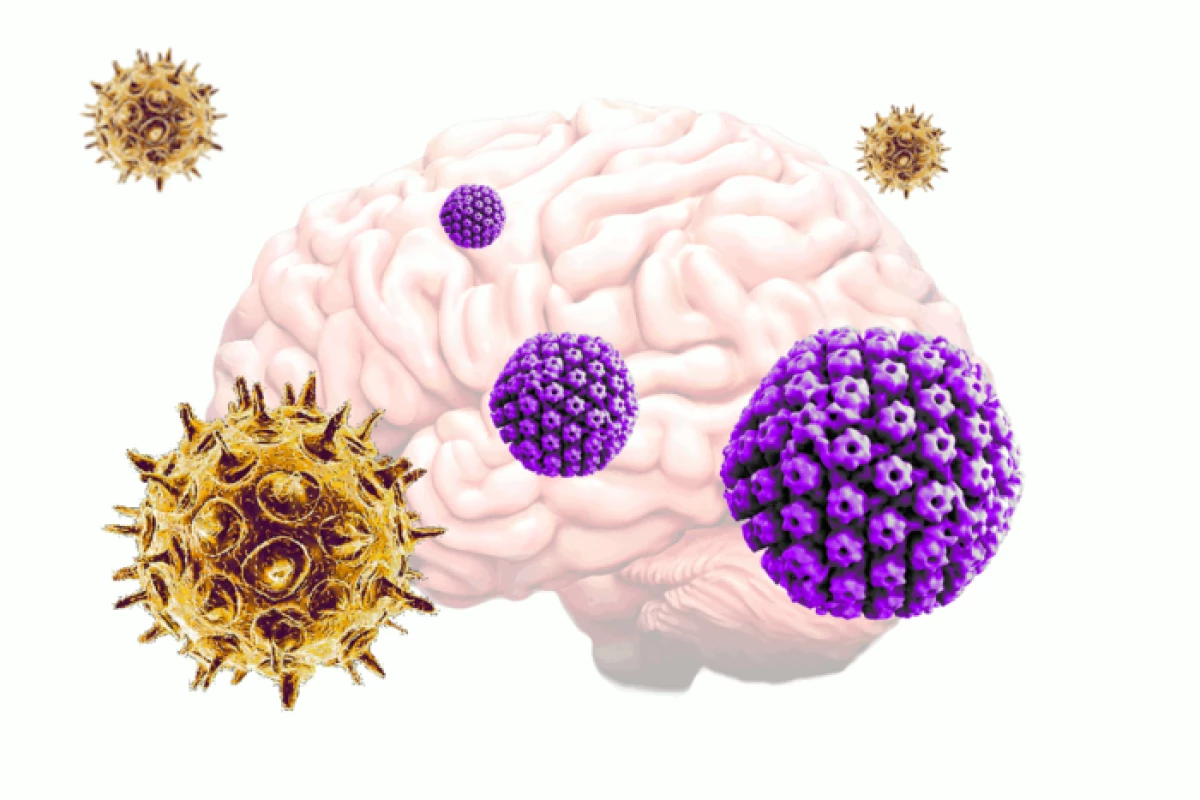A fascinating collaborative study in 2022, between researchers at the University of Oxford and Tufts University, suggested two common viruses could be working in tandem to trigger the earliest stages of Alzheimer’s disease. The findings built on a growing body of evidence implicating the herpes virus in neurodegenerative disease and also turned research attention to a second virus that causes chicken pox.
Editor's note: Readers often ask us for follow-ups on memorable stories. What has happened to this story over the years? This article was originally published in 2022 but has been re-edited and updated with new information current as of Feb 22, 2025. Enjoy!
For over half a century the idea that microbial infections are a trigger for neurodegenerative disease has been hovering on the sidelines of neuroscience. In the 1980s a number of studies pointed to associations between the onset of Alzheimer's disease and herpes simplex viral infections, but exactly how this very common virus could be influencing neurodegeneration was not clear.
A key 2020 study from a Tufts University team demonstrated exactly how a herpes infection could induce several pathological features of Alzheimer’s. The study used a new kind of 3D bioengineered brain model that populated a sponge-like structure with neural stem cells that could be coaxed into a variety of brain cells.
This type of brain tissue model was incredibly novel, and the findings were the first to explicitly show how the common viral infection can lead to pathological signs of Alzheimer’s. But a big question hung over the findings. Considering more than two-thirds of the world’s population carry herpes simplex virus type I (HSV-1), there must be other factors that reactivate the dormant virus and trigger this cascade of events that lead to Alzheimer’s.
Then, in 2022, a study looked to another common virus that had been associated with Alzheimer’s disease – varicella zoster virus (VZV). This virus causes chicken pox and, in later life, shingles. So using the same 3D bioengineered brain model the researchers looked at whether VZV infection influences brain cells already seeded with dormant herpesvirus.
Interestingly, the research found exposing brain cells harboring dormant HSV-1 to VZV led to a reactivation of the herpesvirus and a cascade of the toxic plaques known to be signs of Alzheimer’s. However, all of these Alzheimer’s signs did not appear when brain cells were exposed to VZV in the absence of herpesvirus.
“It’s a one-two punch of two viruses that are very common and usually harmless, but the lab studies suggest that if a new exposure to VZV wakes up dormant HSV-1, they could cause trouble,” said Dana Cairns in 2022, a researcher working on the project.
While the study did confidently propose this two-pronged viral mechanism can lead to Alzheimer’s disease, it did also make clear this is likely only one causal pathway among many. And if reactivating dormant HSV-1 can trigger the progression of Alzheimer’s disease, there are probably a number of ways this can occur beyond an exposure to VZV.
“It’s still possible that other infections and other pathways of cause and effect could lead to Alzheimer’s disease, and risk factors such as head trauma, obesity, or alcohol consumption suggest they may intersect at the re-emergence of HSV in the brain,” added Cairns.
The study also speculated potential future Alzheimer’s problems may arise from the COVID-19 pandemic as SARS-CoV-2 infections have been known to reactivate dormant VSV and HSV-1 infections. It has been suggested the pandemic could increase future rates of neurodegenerative disease and the researchers behind this new study urge clinicians to keep a watchful eye on elderly patients over the coming years.
Since this milestone study linking the two viruses with Alzheimer's a number of other findings have added weight to the association. A stunning four separate studies in 2024 alone reported links between reduced rates of dementia and herpes vaccination. And that same year saw another study detect links between shingles vaccination and lower risk of dementia.
The 2022 study was published in the Journal of Alzheimer’s Disease.
Source: Tufts University
A version of this article was published in 2022.




